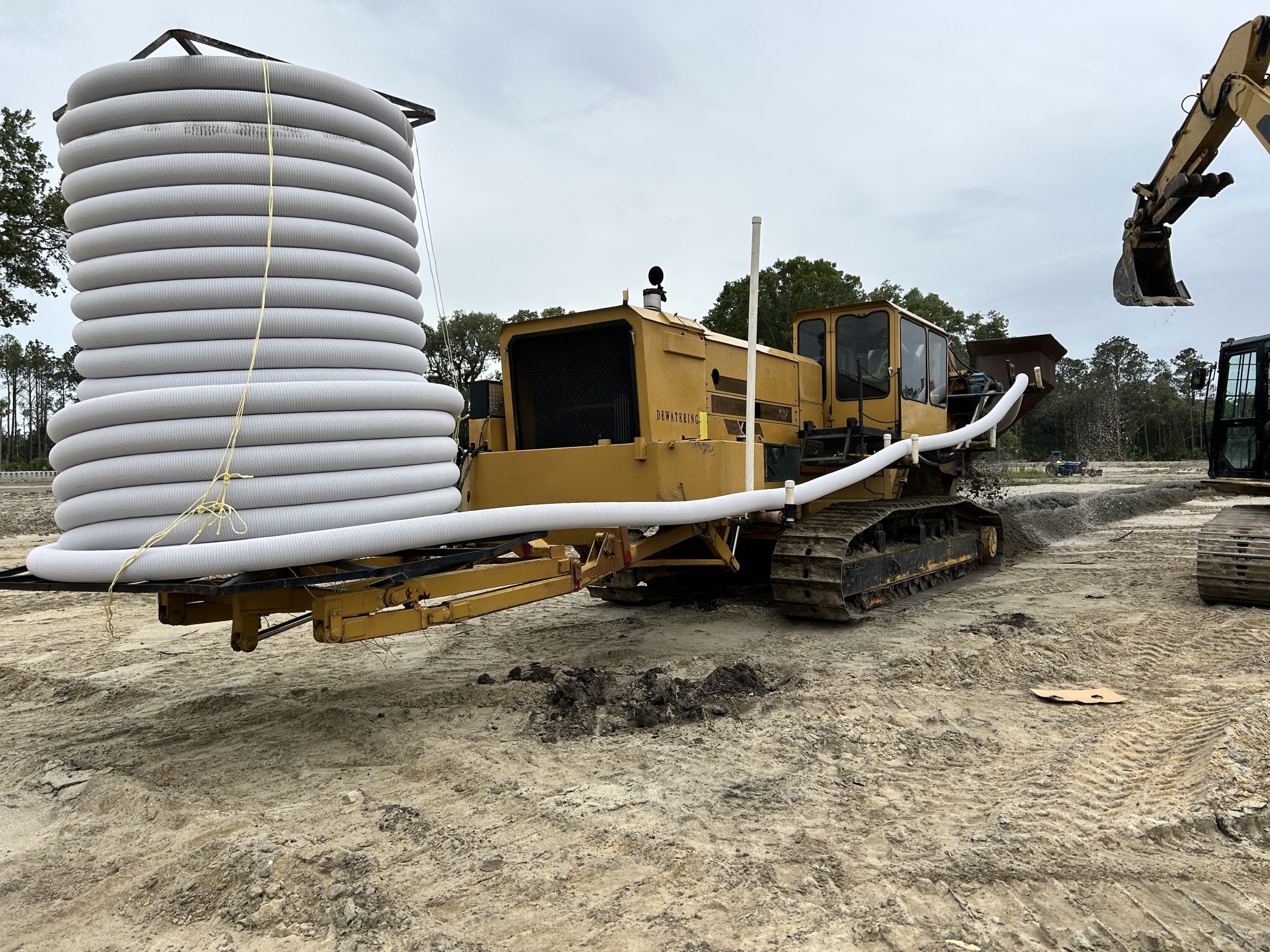Construction projects, particularly in areas with high water tables or saturated soil like in the coastal region of the Carolinas, often encounter the challenge of excess groundwater. This not only poses risks to the stability of the construction site but can also lead to project delays and increased costs. In such scenarios, sock drainage is a pivotal technique to provide effective groundwater control.
Do you know the importance of groundwater control and how the sock drain plays a role to get it done efficiently? If not, never fear. We’ll answer both!
Understanding the Importance of Groundwater Control
Navigating the Subsurface Challenges
In construction, you must master groundwater control and subsurface challenges with precision. Excess groundwater can compromise the stability of excavations, leading to potential collapses and safety hazards.Groundwater control is a foundational element in creating a secure, dry, and stable working environment. Moreover, saturated soil conditions hinder construction progress and can result in prolonged project timelines, which no one appreciates.
The Process of Draining Excess Groundwater with Sock Drainage
Sock drainage is a method for intercepting and draining excess groundwater, ensuring that construction sites remain dry and stable. The process involves the strategic installation of perforated pipes enveloped by a specialized filter fabric known as the “sock.” This sock acts as a meticulous filter, allowing water to enter while preventing soil particles from clogging the drainage system.
-
Installation of Sock Drains:
The process begins with the installation of sock drains in trenches or designated areas. These drains are strategically placed to intercept groundwater and prevent it from accumulating within the construction site.
-
Perforated Pipes and Sock Fabric:
The heart of sock drainage lies in the perforated pipes and the filter fabric. The perforated pipes allow groundwater to enter, and the sock fabric ensures that soil particles are filtered out. This dual action ensures efficient drainage while maintaining the integrity of the drainage system.
-
Gravity and Slope Assistance:
Sock drainage relies on gravity and the natural slope of the construction site to guide the drained water away from the excavation area. This ensures a continuous and efficient flow of groundwater out of the construction zone.
-
Regular Monitoring and Maintenance:
Effective drainage requires regular monitoring and maintenance. Construction teams must keep a vigilant eye on the sock drainage system, ensuring that it operates optimally throughout the construction process. Timely maintenance prevents clogging and ensures uninterrupted groundwater control.
Specialized Equipment in Groundwater Control
Tools of Precision
The success of sock drainage hinges on the use of specialized equipment designed to navigate the intricacies of groundwater control. Key equipment includes:
-
Trenchers:
Trenchers are responsible for creating the channels for installing sock drains. These machines cut through the soil with precision, creating trenches where the drainage system can be strategically placed.
-
Perforated Pipes:
The perforated pipes used in sock drainage are a crucial component. These pipes are designed to allow water to enter while preventing the intrusion of soil particles. The choice of these pipes depends on the specific needs of the construction site.
-
Filter Fabric (Sock):
The filter fabric, commonly referred to as the “sock,” is a specialized material that envelops the perforated pipes. Its design allows water to pass through while keeping soil particles at bay, ensuring the longevity and effectiveness of the drainage system.
-
Monitoring Equipment:
Advanced monitoring equipment helps construction teams keep a real-time check on groundwater levels and the efficiency of the sock drainage system. This proactive approach allows for immediate adjustments if any issues arise.
Elevating Construction Efficiency with Groundwater Control
By understanding the importance of groundwater control, embracing the art of sock drainage, and leveraging specialized equipment, builders, contractors, and others can navigate the challenges of excess groundwater with finesse. Groundwater control not only ensures a safer and more stable working environment but also paves the way for timely and cost-effective project completion.
Connect with East Coast Dewatering to explore how our expertise in sock drainage and groundwater control can seamlessly integrate with your construction project, ensuring a harmonious and successful construction journey.

